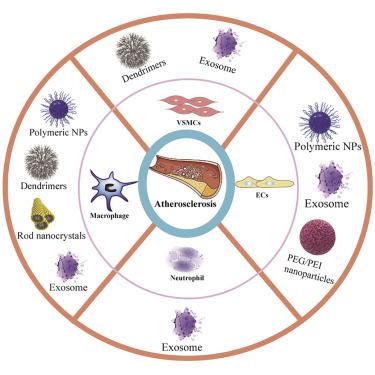Molecular Therapy ( IF 12.1 ) Pub Date : 2022-08-01 , DOI: 10.1016/j.ymthe.2022.07.018 Xiaoxin Li 1 , Hongzhao Qi 1 , Weigang Cui 2 , Zhibin Wang 3 , Xiuxiu Fu 3 , Tianxiang Li 1 , Huibo Ma 4 , Yanyan Yang 5 , Tao Yu 6

|
Cardiovascular disease (CVD) has overtaken infectious illnesses as the leading cause of mortality and disability worldwide. The pathology that underpins CVD is atherosclerosis, characterized by chronic inflammation caused by the accumulation of plaques in the arteries. As our knowledge about the microenvironment of blood vessel walls deepens, there is an opportunity to fine-tune treatments to target the mechanisms driving atherosclerosis more directly. The application of non-coding RNAs (ncRNAs) as biomarkers or intervention targets is increasing. Although these ncRNAs play an important role in driving atherosclerosis and vascular dysfunction, the cellular and extracellular environments pose a challenge for targeted transmission and therapeutic regulation of ncRNAs. Specificity, delivery, and tolerance have hampered the clinical translation of ncRNA-based therapeutics. Nanomedicine is an emerging field that uses nanotechnology for targeted drug delivery and advanced imaging. Recently, nanoscale carriers have shown promising results and have introduced new possibilities for nucleic acid targeted drug delivery, particularly for atherosclerosis. In this review, we discuss the latest developments in nanoparticles to aid ncRNA-based drug development, particularly miRNA, and we analyze the current challenges in ncRNA targeted delivery. In particular, we highlight the emergence of various kinds of nanotherapeutic approaches based on ncRNAs, which can improve treatment options for atherosclerosis.
中文翻译:

基于非编码 RNA 的动脉粥样硬化靶向治疗的最新进展
心血管疾病(CVD)已超过传染病,成为全球死亡和残疾的主要原因。CVD 的病理学是动脉粥样硬化,其特征是动脉中斑块积聚引起的慢性炎症。随着我们对血管壁微环境了解的加深,我们有机会微调治疗方法,以更直接地针对驱动动脉粥样硬化的机制。非编码 RNA (ncRNA) 作为生物标志物或干预靶点的应用正在增加。尽管这些 ncRNA 在驱动动脉粥样硬化和血管功能障碍中发挥着重要作用,但细胞和细胞外环境对 ncRNA 的靶向传输和治疗调节提出了挑战。特异性、递送和耐受性阻碍了基于 ncRNA 的疗法的临床转化。纳米医学是一个利用纳米技术进行靶向药物输送和先进成像的新兴领域。最近,纳米级载体已经显示出有希望的结果,并为核酸靶向药物递送(特别是动脉粥样硬化)带来了新的可能性。在这篇综述中,我们讨论了纳米颗粒的最新进展,以帮助基于 ncRNA 的药物开发,特别是 miRNA,并分析了当前 ncRNA 靶向递送面临的挑战。我们特别强调基于 ncRNA 的各种纳米治疗方法的出现,这些方法可以改善动脉粥样硬化的治疗选择。







































 京公网安备 11010802027423号
京公网安备 11010802027423号